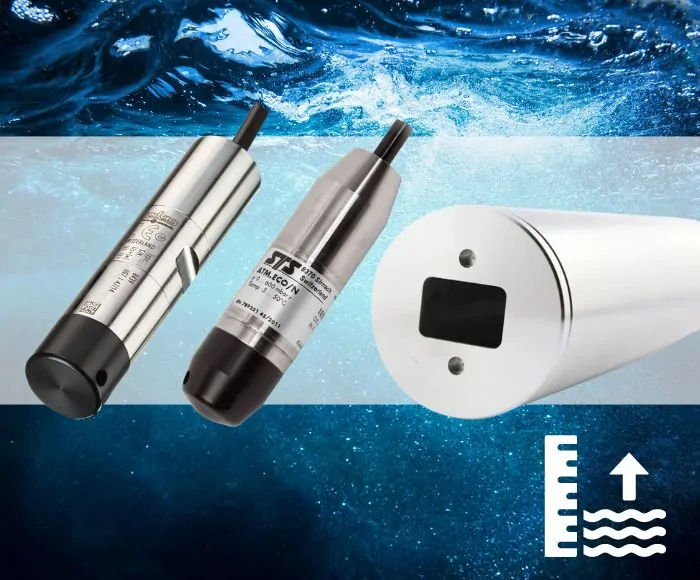06.05.2024
Water level probes are key elements in water treatment plants and sewage treatment plants, where they have many applications. Here are some examples of their use:

The use of water level probes in water treatment plants is crucial to ensure the efficient and reliable operation of the installation, as well as to maintain the high quality of the water supplied.
One type of water level probe is a hydrostatic probe. It works on the principle of using the pressure exerted by the liquid column on the bottom of the tank. The depth of immersion of the probe in the liquid affects the pressure that is exerted on the sensor inside the probe. This type of measurement is based on the principle that the pressure of a liquid increases with depth. Hydrostatic measurement is one of the most commonly used methods for measuring water levels because it is relatively simple to use and provides accurate readings, especially in static tanks.
Poltraf's offer includes ECL hydrostatic water level probes from the Swiss manufacturer Trafag. The ranges 0…4, 0..6 and 0…10 mH2O of the ECL probe are available immediately. An attractive discount applies to a single purchase of at least 5 ECL probes in the above ranges. The ECL probe has a PZH hygiene certificate, which allows the device to come into contact with drinking water. ECL probes are an economical and universal device for measuring the level of water, sewage and other liquids.
If it is necessary to adapt the water level probe to individual, specific requirements (i.e. non-standard versions), we offer water level probes from another Swiss manufacturer - STS.
A new product in Poltraf's offer is the LMP laser level probe. LMP is a laser measurement of the filling height of liquid and loose products in tanks. Installed in connections with a diameter from DN80, it enables continuous measurement of the amount of liquid in tanks using a laser beam. High accuracy, convenient installation, universal use - all these elements help reduce the costs of implementing and using measurement systems. The system can be used with any medium (regardless of dirt, density or viscosity) because the measurement is non-contact.

05.05.2025
The Trade Fair of Machines and Devices for Water and Sewage Systems WOD-KAN will begin in Bydgoszcz in just 3 weeks. The water and sewage industry is an important recipient of our measuring devices, which is why we cannot miss the 31st edition of the Bydgoszcz trade fair.

17.06.2025
The next edition of the Poltraf conference will be held on October 8-10, 2025. This time, it will be devoted to new devices for measuring flow, level, pressure, temperature and measurements of water and gas parameters in environmental and process conditions.

We are a representative and distributor in Poland of the following brands: